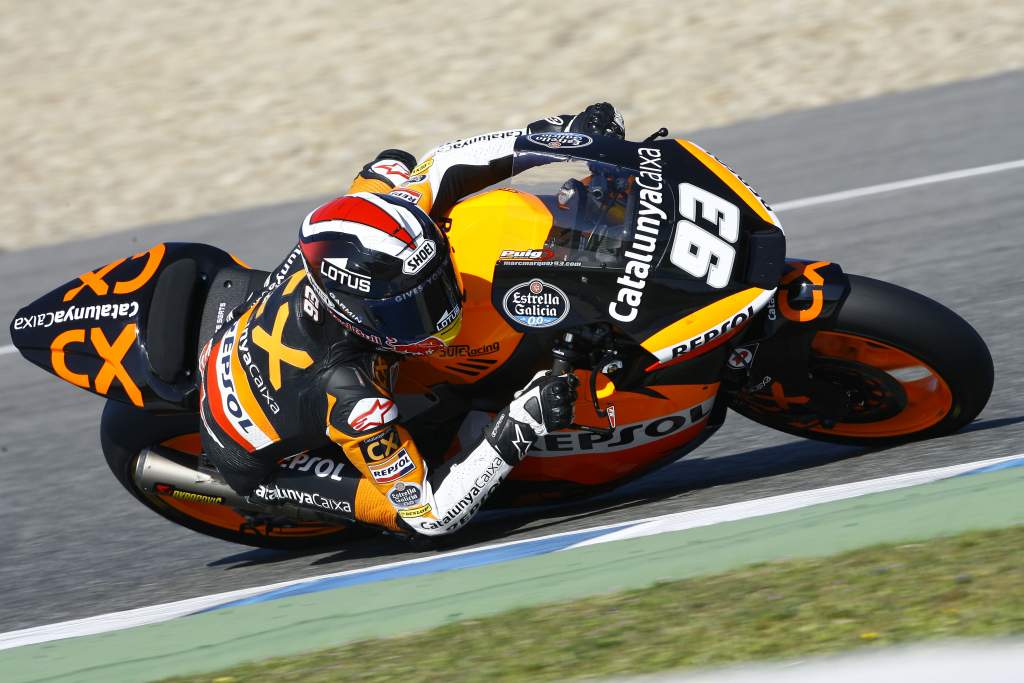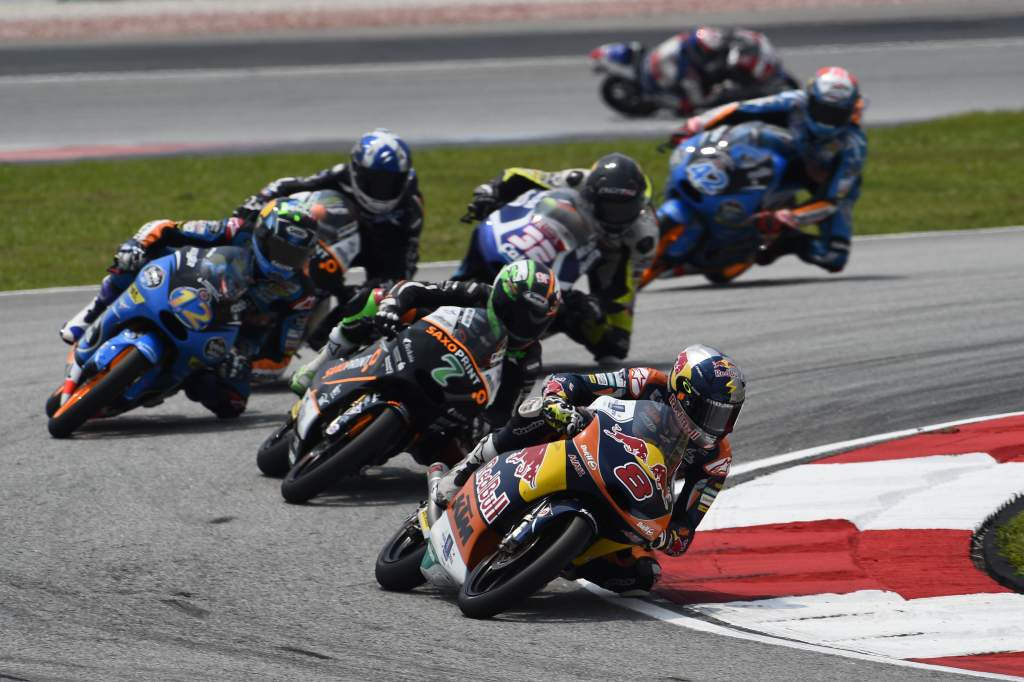The finale of the 2021 Moto3 world championship at Sunday’s Algarve Grand Prix has once again prompted calls for MotoGP to introduce some sort of Formula 1-style superlicence, after Darryn Binder knocked off Dennis Foggia and handed the title to Pedro Acosta, only two races before Binder is set to skip Moto2 and make the move directly from Moto3 to MotoGP.
Those calls were led by race winner and 2021 MotoGP championship runner-up Pecco Bagnaia, who says that the two-wheeled series needs to look at replicating the system that has so far been a success for F1.

So what exactly is an F1 superlicence? Well, simply put, before you can be signed to a team in the premier class, you have to have first met the requirements needed to secure a superlicence.
You have to be over 18, something already taken care of by MotoGP’s move to raise minimum age requirements from 2023. You have to already hold a racing licence. You have to complete a theory test.
But the final qualification is the most important. You must have completed 80% of two seasons in single-seater racing cars, and you must have scored at least 40 licence points, with points awarded depending on where drivers finish in those championships (which have a variety of weightings from grassroots level to Formula 2) and totalled over the previous three seasons.
So how would such a scale look for MotoGP? Well, based on a rough read over how the FIA administers its licence, we mocked up a rough tally for motorcycle racing too, taking into account the top series and the most common paths to grand prix racing.
| 1st | 2nd | 3rd | 4th | 5th | 6th | 7th | 8th | 9th | 10th | |
| Moto2 | 50 | 40 | 30 | 20 | 10 | 8 | 6 | 5 | 3 | 1 |
| Moto3 | 30 | 20 | 10 | 8 | 6 | 5 | 3 | 1 | ||
| CEV Moto2 | 20 | 10 | 8 | 6 | 5 | 3 | 1 | |||
| CEV Moto3 | 20 | 10 | 8 | 6 | 5 | 3 | 1 | |||
| WSB | 50 | 40 | 30 | 20 | 10 | 8 | 6 | 5 | 3 | 1 |
| WSSP | 10 | 8 | 6 | 5 | 3 | 1 | ||||
| WSSP300 | 10 | 8 | 6 | 5 | 3 | 1 | ||||
| EWC | 30 | 20 | 10 | 8 | 6 | 5 | 3 | 1 | ||
| BSB | 20 | 10 | 8 | 6 | 5 | 3 | 1 | |||
| MotoAmerica | 20 | 10 | 8 | 6 | 5 | 3 | 1 | |||
| All-Japan | 20 | 10 | 8 | 6 | 5 | 3 | 1 |
The most common opposition raised against moving to such a system, most recently by factory Yamaha rider Franco Morbidelli on Sunday, is that it would have arguably excluded some of the best and brightest talent in racing from making rapid progress up the career ladder.
Yet to take some case studies of youngsters who have made rapid progress, it’s arguable that it wouldn’t have slowed down the ones who were clearly ready.

For example, when Marc Marquez moved to MotoGP and won the title as a rookie in 2013, he had come directly from winning the Moto2 title, a year after finishing runner-up and two years after winning in Moto3: a series of results that would have left him with 120 points against the 40 needed.
The same applies to 2022 rookie Raul Fernandez, who should finish the 2021 season on 48 points after fourth in Moto3 followed by second in Moto2.
In fact, arguably the only two riders at the front of the MotoGP grid who would have been affected are 2021 world champion Fabio Quartararo and Ducati rider Jack Miller. Quartararo would have had just one point at the end of 2018, when he made his MotoGP move – although at least he would have had experience on a bigger bike than just Moto3.
Similarly Miller, the only other rider besides the younger Binder to to jump directly from Moto3 to MotoGP, would have had 23 points – closer than Quartararo but still enough to necessitate an arguably-needed year in Moto2 as well.

But those stats highlight the reality of the situation. Sure, some riders would be punished by a move to superlicences – and perhaps in some cases you could even argue that it’s an unfair punishment – Quartararo, for example, was a really handy MotoGP rider right off the bat. But sometimes in order to increase safety for everyone, sacrifices must be made.
MotoGP promoter Dorna and governing body the FIM have already proven lately that they’re willing to make such unpopular changes with their increases to the minimum age in which you can join grand prix racing – so here’s hoping that the next thing under consideration is a way to make sure that only the most ready make it to the most dangerous bikes.





